
Facts & Figures
CREATIVE TEAM
Convergence Culture: Where Old and New Media Collide evaluates the industrial, cultural and social transformations taking place as media platforms are increasingly converging. This trend impacts both the way media is produced and how it is consumed, and is therefore discussed through various perspectives, by taking a closer look at three key concepts: media convergence, participatory culture and collective intelligence.
Convergence describes the blurring of lines between mediums as content increasingly flows across multiple media platforms. It refers to the technological processes in which different media are brought together on the same devices, thus altering the way consumers interact with technology. More importantly, convergence underlines the cultural and social shifts brought about by the changing relationships between audiences, producers and content, the opportunities media professionals and consumers can take advantage of and the pitfalls they face. Convergence is driven by two sides: top-down by corporations’ corporate convergence and bottom-up by consumers’ grassroots convergence. The changes of the media landscape can be explained by the interplay between grassroots and corporate convergence, in which participation (i.e. the way consumers seek out and produce content, and make connections) is a main concept.
Participatory culture is in contrast with the traditional role of audiences as merely spectators. Nowadays, audience members have an active role wherein they contribute critically or creatively and interact with others, being other individuals or corporations. Yet, the power distribution is not divided equally, as media conglomerates become bigger and more concentrated, and some consumers have more abilities to emerge than others. Convergence happens among the participating individuals and through their social actions, and there lies their collective potential to drive change.
Collective intelligence, the sum of knowledge of a group, can be seen as such source of consumer power. Since no one individual knows everything, but we all know something, when combining our skills and knowledge, consumption becomes another collective force made possible by convergence.
Exploring Jenkins’ three concepts, it becomes clear that the ways we think about our relations with the media are changing, may it be from an academic, industrial or consumption perspective. What also changes are the delivery technologies, also referred to as black boxes, which we use to access media; they rapidly become obsolete and are replaced as the diverging hardware complies with the converging media. There is even a contemporary vision on having one black box through which all media will flow, known as The Black Box Fallacy. What is important to remember is that the introduction of new media types, and the changes in consumption and production processes, do not point to the end of traditional media. Instead,
“once a medium establishes itself as satisfying some core human demand” - Jenkins
its content can be adapted, new audiences identified, and delivery systems adjusted, so it can co-exists within the wide system of communication options.
In chapter 1, we will further explore the concept of collective intelligence, by looking at how online communities combine their knowledge on a shared interest to make sense of the greater whole.
GLOSSARY
READ
THE AUTHOR & THE BOOK
Practice
CHAPTERS
WATCH
Test your knowledge by answering these questions about the Introduction.
Find out what the 5 most popular black boxes of American students are.
LITERATURE
Global News Wire. (2013) Tech Savvy College Students are Gathering Gadgets Saying Yes to Showrooming and Rejecting Second Screen. Consulted on 10.09.2014. Retrieved from: http://www.globenewswire.com/news-release/2013/06/13/554002/10036312/en/Tech-Savvy-College-Students-Are-Gathering-Gadgets-Saying-Yes-to-Showrooming-and-Rejecting-Second-Screening.html
Jenkins, H. (2008) Convergence Culture. Where Old and New Media Collide. U.S.A. New York: New York University Press.
Marketingcharts. (2013) College Students Own an Average of 7 Tech Devices. Consulted on 20.09.2014. Retrieved from: http://www.marketingcharts.com/online/college-students-own-an-average-of-7-tech-devices-30430/
Youtube. (2009) Henry Jenkins. Consulted on 20.09.2014. Retrieved from :https://www.youtube.com/watch?v=ibJaqXVaOaI
The Black Box Fallacy
Grassroot Convergence
The relationship between which three concepts can explain cultural transformations regarding media use?
What is convergence?
What term is used to describe the bottom-up, informal, and sometimes unauthorized flow of media content?
How does Jenkins refer to the contemporary vision on having one device through which all media content will flow?
Which term is used to describe the sum of knowledge of a group?
Media convergence, participatory culture and collective intelligence
Convergence describes the flow of content across multiple media platforms, the cooperation between multiple media industries, and the migratory behavior of media audiences.
Collective intelligence
Worship at the Altar of Convergence: A New Paradigm for Understanding Media Change
An introduction to three main concepts; media convergence, participation culture and collective intelligence.
33% GAME CONSOLE
33% MOBILE PHONE
36% TABLET
DISCLAIMER
85% LAPTOP
70% SMARTPHONE
Introduction